A Peak into the Content Pipeline for Volume
A Peak into the Content Pipeline for Volume
Building an efficient and lean content production pipeline for Volume to streamline the curation and delivery of top-quality articles, book summaries, and explainers.
Building an efficient and lean content production pipeline for Volume to streamline the curation and delivery of top-quality articles, book summaries, and explainers.



Overview
In our early days, the team at Volume comprised of two designers, one writer, and two engineers. As we were building Volume with part-time employees, we needed to develop a system that would function continuously, regardless of the batched hours contributed by each team member.
This article is a peak into our entire content production pipeline. I hope this is helpful for setting up structured process amongst others starting a media company focussed on original content.
Overview
In our early days, the team at Volume comprised of two designers, one writer, and two engineers. As we were building Volume with part-time employees, we needed to develop a system that would function continuously, regardless of the batched hours contributed by each team member.
This article is a peak into our entire content production pipeline. I hope this is helpful for setting up structured process amongst others starting a media company focussed on original content.



Notion provided a flexible, Lego-like framework that enabled us to construct the entire workspace from scratch, avoiding the rigid pre-existing structures typical of enterprise tools such as Jira or ClickUp.
The core functions of the organization are segmented into five distinct team spaces, each operating autonomously. Each function works like it’s own startup.
Notion provided a flexible, Lego-like framework that enabled us to construct the entire workspace from scratch, avoiding the rigid pre-existing structures typical of enterprise tools such as Jira or ClickUp.
The core functions of the organization are segmented into five distinct team spaces, each operating autonomously. Each function works like it’s own startup.
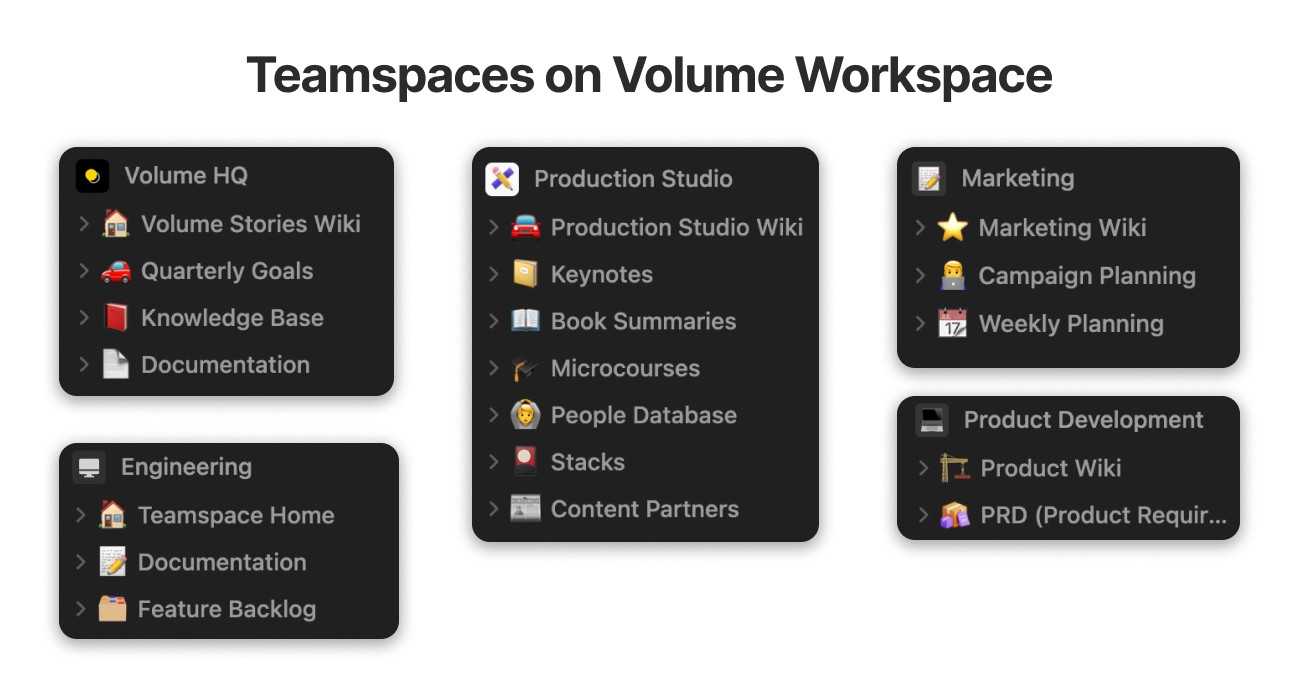


In this article, I want to go deeper into how we structured our content pipeline.
Before we dive into the nuts and bolts of our content production pipeline, let's first understand how content is structured in Volume. Unlike platforms like Medium, where everything opens into a straightforward reader view, Volume takes a different approach. We've got three main types of content, and each one offers a unique content experience.
This distinction ensures that whether you're reading an article, browsing through a book summary, or engaging with an interactive piece, the format is specifically tailored to enhance your experience and interaction with the content.
In this article, I want to go deeper into how we structured our content pipeline.
Before we dive into the nuts and bolts of our content production pipeline, let's first understand how content is structured in Volume. Unlike platforms like Medium, where everything opens into a straightforward reader view, Volume takes a different approach. We've got three main types of content, and each one offers a unique content experience.
This distinction ensures that whether you're reading an article, browsing through a book summary, or engaging with an interactive piece, the format is specifically tailored to enhance your experience and interaction with the content.



The Editorial Process
We have a pretty thorough process that ensures everything we create is top-notch from start to finish. Let me walk you through the four key stages of our in-house content production pipeline. It all starts with ideation, where the magic begins. Our team comes together to toss around ideas, pulling from industry trends, audience insights, and a sprinkle of creative magic. This phase is all about brainstorming and fleshing out ideas until we've got a solid base for some truly engaging content.
Once our ideas are set, we move into the writing stage. Here, our talented writers transform these concepts into real, compelling narratives. Whether it’s crafting content for our magazines, series, or even book summaries, the focus is always on clear messaging and engaging storytelling. Then, it’s over to our design team who bring these narratives to life through visuals. Depending on the content, this could mean graphic designs, or even interactive media, all tailored to align perfectly with the content. The final step is the review stage, where every piece of content is rigorously checked. We look at everything from coherence in the art direction to overall quality. Only after everything meets our standards do we go ahead and publish.
The entire process is asynchronous. The designers constantly communicate with the writer for the nuances, but the entire design process is detached from the writing. This allows a designer to pick up any pending work in the backlog and plan their weekly work accordingly. The entire system is self regulated without the need for a Manager. Each vertical in the pipeline holds the previous process of the pipeline accountable. The feedback data and response from the content that is deployed holds the entire pipeline accountable.
The Editorial Process
We have a pretty thorough process that ensures everything we create is top-notch from start to finish. Let me walk you through the four key stages of our in-house content production pipeline. It all starts with ideation, where the magic begins. Our team comes together to toss around ideas, pulling from industry trends, audience insights, and a sprinkle of creative magic. This phase is all about brainstorming and fleshing out ideas until we've got a solid base for some truly engaging content.
Once our ideas are set, we move into the writing stage. Here, our talented writers transform these concepts into real, compelling narratives. Whether it’s crafting content for our magazines, series, or even book summaries, the focus is always on clear messaging and engaging storytelling. Then, it’s over to our design team who bring these narratives to life through visuals. Depending on the content, this could mean graphic designs, or even interactive media, all tailored to align perfectly with the content. The final step is the review stage, where every piece of content is rigorously checked. We look at everything from coherence in the art direction to overall quality. Only after everything meets our standards do we go ahead and publish.
The entire process is asynchronous. The designers constantly communicate with the writer for the nuances, but the entire design process is detached from the writing. This allows a designer to pick up any pending work in the backlog and plan their weekly work accordingly. The entire system is self regulated without the need for a Manager. Each vertical in the pipeline holds the previous process of the pipeline accountable. The feedback data and response from the content that is deployed holds the entire pipeline accountable.



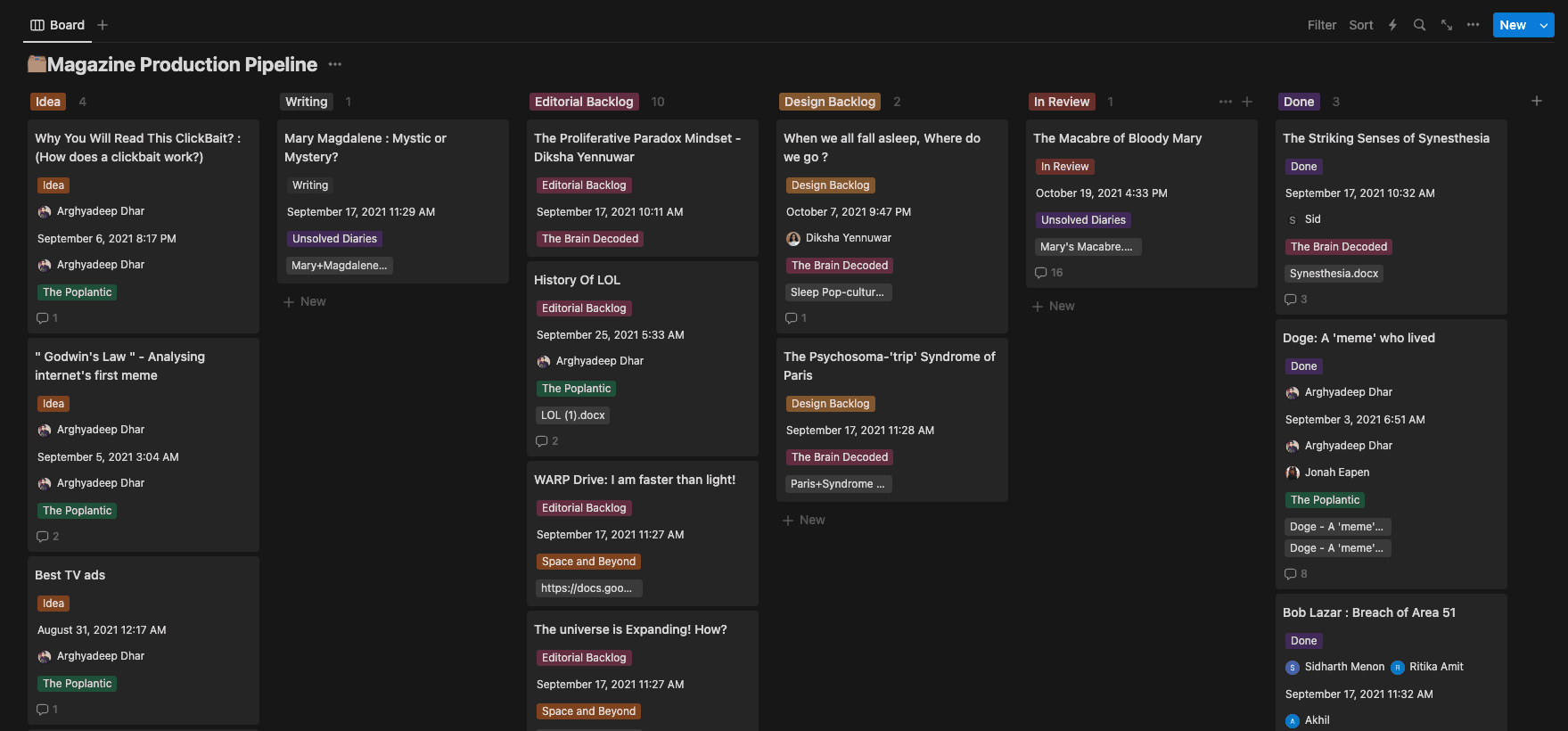


Building Playbooks for Consistent Design
In our rapid production process, maintaining consistent quality across magazines and series is paramount. To achieve this, our approach integrates a crucial tool into our content production pipeline: the playbook.
A playbook acts as a miniature brand book, embodying the essence of a series or magazine. It's crafted by a designer who steps into the role of an art director, tasked with conceptualizing the overall design and branding. This initial phase is vital, as it sets the aesthetic and thematic tone for the content, ensuring that all elements align with the overarching vision.
Once the conceptual groundwork is laid out, we create a detailed playbook. This document, typically spanning 1-2 pages, outlines strict standards for color schemes, font families, sizing, layouts, and stylistic approaches. The playbook serves as a comprehensive guide that any designer can follow—whether they are continuing a series for a new season or contributing to an ongoing magazine story.
Building Playbooks for Consistent Design
In our rapid production process, maintaining consistent quality across magazines and series is paramount. To achieve this, our approach integrates a crucial tool into our content production pipeline: the playbook.
A playbook acts as a miniature brand book, embodying the essence of a series or magazine. It's crafted by a designer who steps into the role of an art director, tasked with conceptualizing the overall design and branding. This initial phase is vital, as it sets the aesthetic and thematic tone for the content, ensuring that all elements align with the overarching vision.
Once the conceptual groundwork is laid out, we create a detailed playbook. This document, typically spanning 1-2 pages, outlines strict standards for color schemes, font families, sizing, layouts, and stylistic approaches. The playbook serves as a comprehensive guide that any designer can follow—whether they are continuing a series for a new season or contributing to an ongoing magazine story.
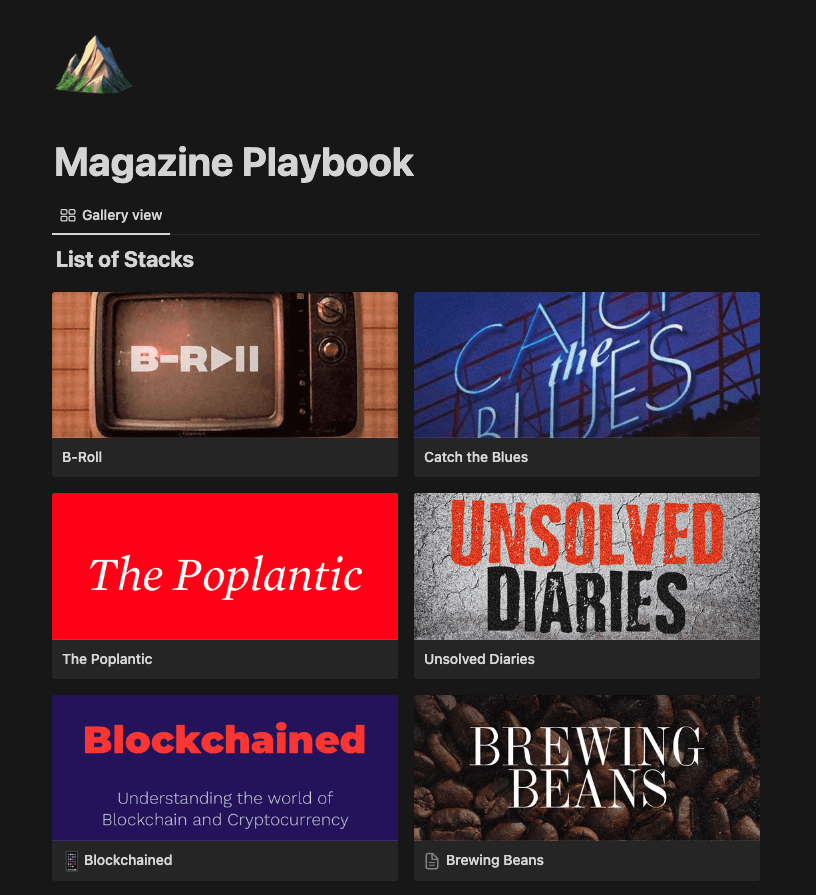


The advantages of using playbooks are substantial. For one, they preserve the artistic decisions made by the original art director, allowing subsequent designers to build on a solid foundation without the need to "reinvent the wheel." This continuity is crucial for maintaining a cohesive look and feel across all our publications, enhancing brand recognition and reader engagement.
Moreover, playbooks have dramatically improved our design efficiency. By having a clear, concise set of guidelines, designers can swiftly produce designs that meet our standards, reducing the time typically spent on decision-making and revisions. In fact, since implementing playbooks, we've observed a 70% increase in the speed of our design processes.
Playbooks are not tools for standardization; they are catalysts for creativity, allowing designers to innovate beyond a defined framework, than reinventing the wheel multiple times.
The advantages of using playbooks are substantial. For one, they preserve the artistic decisions made by the original art director, allowing subsequent designers to build on a solid foundation without the need to "reinvent the wheel." This continuity is crucial for maintaining a cohesive look and feel across all our publications, enhancing brand recognition and reader engagement.
Moreover, playbooks have dramatically improved our design efficiency. By having a clear, concise set of guidelines, designers can swiftly produce designs that meet our standards, reducing the time typically spent on decision-making and revisions. In fact, since implementing playbooks, we've observed a 70% increase in the speed of our design processes.
Playbooks are not tools for standardization; they are catalysts for creativity, allowing designers to innovate beyond a defined framework, than reinventing the wheel multiple times.
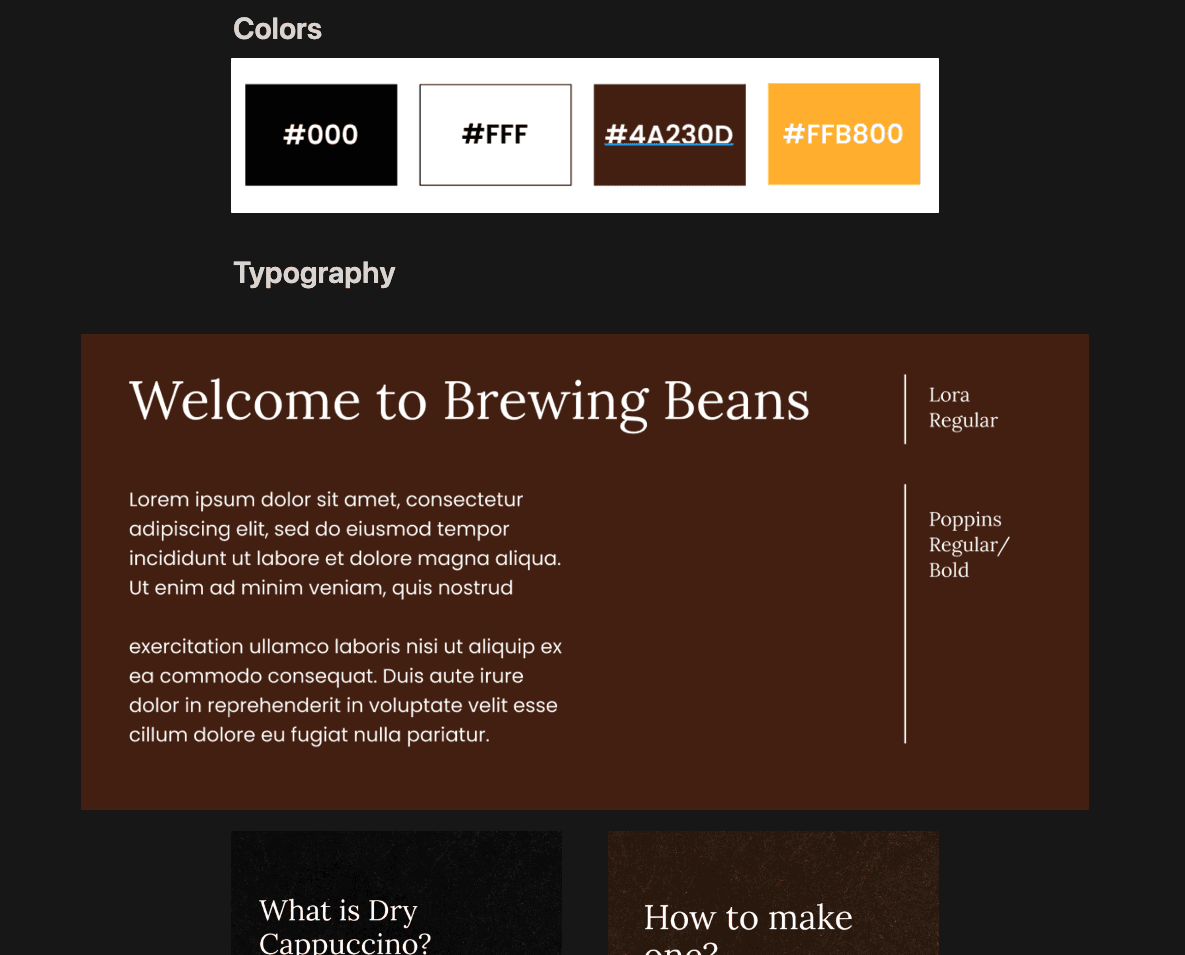


Deploying to Backend
After our content is finalized—encompassing everything from text to design and audio elements—we begin the technical phase of metadata creation. Metadata, or data about data, plays a critical role in how content is stored, retrieved, and displayed. It includes details such as the title, descriptions, keywords, and much more, making the content searchable and organized.
The next step in our process involves uploading this content to our platform. We use Postman, a popular API client, to send our content along with its metadata to our PostgreSQL database and an S3 bucket for storage.
Despite the small size of our team and the high costs associated with third-party internal tools, Django offers a powerful, budget-friendly solution. The Django admin panel is God sent. Django’s admin panel is a ready-to-use interface for interacting with the database directly. It eliminates the need for building custom backend interfaces, which can be resource-intensive and time-consuming. This out-of-the-box tool provides our team with a comprehensive dashboard to add or modify the content’s metadata, associate topics, and perform other bulk action tasks efficiently on our content catalogue.
Deploying to Backend
After our content is finalized—encompassing everything from text to design and audio elements—we begin the technical phase of metadata creation. Metadata, or data about data, plays a critical role in how content is stored, retrieved, and displayed. It includes details such as the title, descriptions, keywords, and much more, making the content searchable and organized.
The next step in our process involves uploading this content to our platform. We use Postman, a popular API client, to send our content along with its metadata to our PostgreSQL database and an S3 bucket for storage.
Despite the small size of our team and the high costs associated with third-party internal tools, Django offers a powerful, budget-friendly solution. The Django admin panel is God sent. Django’s admin panel is a ready-to-use interface for interacting with the database directly. It eliminates the need for building custom backend interfaces, which can be resource-intensive and time-consuming. This out-of-the-box tool provides our team with a comprehensive dashboard to add or modify the content’s metadata, associate topics, and perform other bulk action tasks efficiently on our content catalogue.
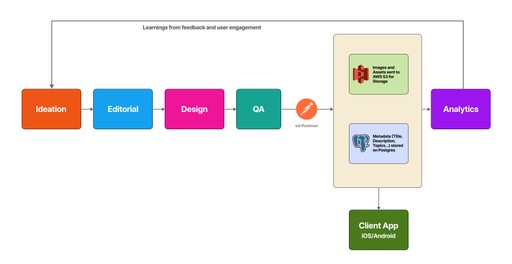


Closing Notes
What's next?
At Volume, we've built a foundation for our content production, guided by a structured process. However, our journey towards optimizing our content delivery and management systems is far from complete. We're constantly seeking ways to refine our approach and enhance the efficiency and effectiveness of our workflows.
Despite the successes we've achieved with in-house tools and the processes, there are areas for improvement and new opportunities for growth. Currently, our process relies heavily on manual interventions for content uploads and metadata management, using tools like Postman for deploying content to our PostgreSQL database and S3 buckets. This method, while effective, does have its limitations, particularly in terms of scalability and the potential for human error.
Looking forward, we're excited about the possibilities that lie ahead. One major development we're working towards is the implementation of direct app-based configurations and management of our content catalog by admins and staff. This will enable a more streamlined, automated process for uploading and managing content, reducing the dependency on external tools and manual processes.
By enhancing our backend systems with more integrated, user-friendly interfaces, we aim to give our team more control and flexibility, allowing for quicker updates and more consistent deployment of new content, on the go.
Closing Notes
What's next?
At Volume, we've built a foundation for our content production, guided by a structured process. However, our journey towards optimizing our content delivery and management systems is far from complete. We're constantly seeking ways to refine our approach and enhance the efficiency and effectiveness of our workflows.
Despite the successes we've achieved with in-house tools and the processes, there are areas for improvement and new opportunities for growth. Currently, our process relies heavily on manual interventions for content uploads and metadata management, using tools like Postman for deploying content to our PostgreSQL database and S3 buckets. This method, while effective, does have its limitations, particularly in terms of scalability and the potential for human error.
Looking forward, we're excited about the possibilities that lie ahead. One major development we're working towards is the implementation of direct app-based configurations and management of our content catalog by admins and staff. This will enable a more streamlined, automated process for uploading and managing content, reducing the dependency on external tools and manual processes.
By enhancing our backend systems with more integrated, user-friendly interfaces, we aim to give our team more control and flexibility, allowing for quicker updates and more consistent deployment of new content, on the go.
Let's get to know each other.
Let's get to know each other.
Let's get to know each other.
© Jonah Jacob Eapen 2024